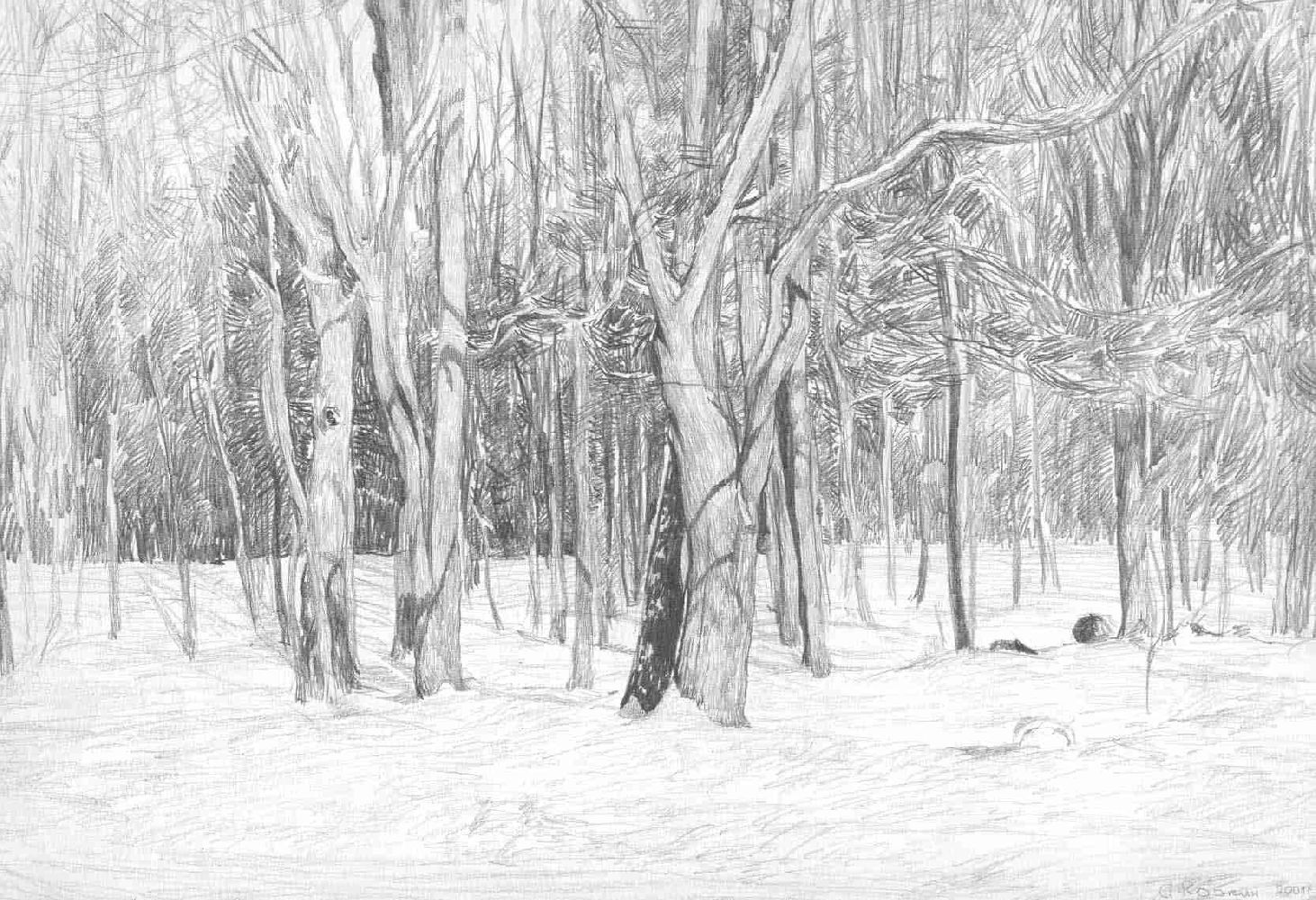

Title: Trees a drawing by artist Simon Kozhin
Shipping: $300.00
Artist: N/A
Period: Contemporary
History: N/A
Origin: N/A
Condition: Museum Quality
Item Date: 2002
Item ID: 3088
Trees a drawing by artist Simon Kozhin. A work on Paper. pencil drawing. The sketch was made by the artist in the winter. The park Kolomenskoye, which is located in Moscow. It was not very cold month of March. Kolomenskoye village was first mentioned in the testament of Ivan Kalita (1339). As the time went by, the village was developed as a favourite country estate of grand princes of Muscovy. The earliest extant structure is the exceptional Ascension church (1532), built in white stone to commemorate the long-awaited birth of an heir to the throne, the future Ivan the Terrible. Being the first stone church of tent-like variety, the uncanonical "White Column" (as it is sometimes referred to) marked a stunning rupture with the Byzantine tradition. [1] The church stands up toward the sky from a low cross-shaped podklet (ground floor), then follows a prolonged chetverik (octagonal body) of the church, and then an octagonal tent, crowned by a tiny dome. The narrow pilasters on the sides of the chetverik, the arrow-shaped window frames, the three tiers of the kokoshniks and the quiet rhythm of stair arcades and open galleries underline the dynamic tendency of this masterpiece of the Russian architecture. The whole vertical composition is believed to have been borrowed from hipped roof-style wooden churches of the Russian North. Recognizing its outstanding value for humanity, UNESCO decided to inscribe the church on the World Heritage List in 1994.
Link: http://en.wikipedia.org/wiki/Sketch_(drawing)
A sketch is a executed freehand drawing that is not intended as a finished work. If in oil paint it is called an oil sketch. In general, a sketch is a quick way to record an idea for later use. Artist's sketches primarily serve as a way to try out different ideas and establish a composition before undertaking a more finished work, especially when the finished work is expensive and time consuming (as in the case of a large painting or fresco). Sketching sharpens an artist's ability to focus on the most important elements of a subject and is a prescribed part of artistic development for students. Dry media such as pencil or pastel are often preferred due to time constraints, but a quickly done watercolor study or even quickly modeled clay or soft wax can also be considered a 'sketch' in the broader sense of the term. Graphite pencils being a relatively new invention, the artists of the Renaissance could make sketches using the expensive method of a silver stylus on specially prepared paper (known as silverpoint), with results similar to a modern pencil sketch, or, more cheaply, using charcoal, chalk, or pen-and-ink. Contrary to popular belief, artists often use erasers when drawing; the eraser may be used to remove rough construction lines, or to soften lines for visual effect. The most commonly used eraser for pencil drawing is the kneaded eraser, which has a soft, sticky surface that enables the artist to lift the graphite or charcoal from the drawing surface without smudging. White plastic erasers can cleanly erase line work, but tend to smudge heavy shading. The sketchbooks of Leonardo da Vinci and Edgar Degas are two examples of many done by famous artists which have become art objects in their own right, although many pages show more thoughtful studies rather than true sketches. The ability to quickly record impressions through sketching has found varied purposes in today's culture. Courtroom artists are usually sketchers. Sketches drawn to help authorities find or identify wanted people are called composite sketches. Street performers in popular tourist areas often include artists who sketch portraits within minutes.